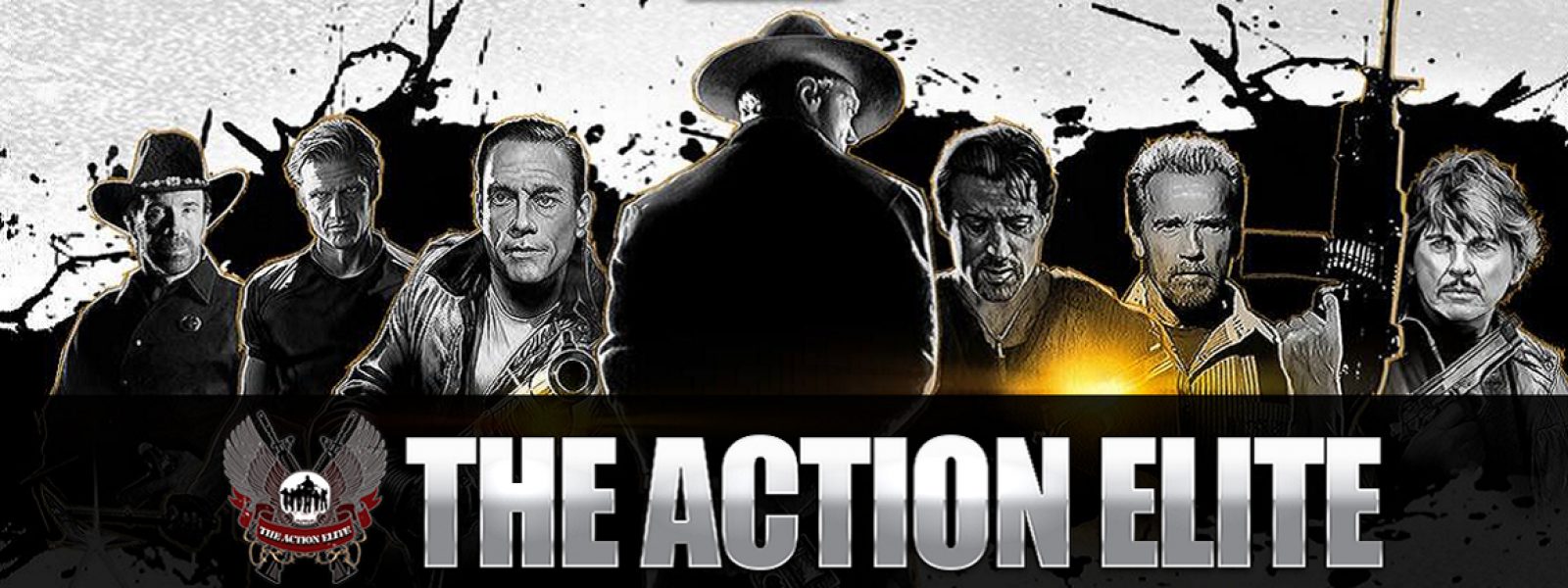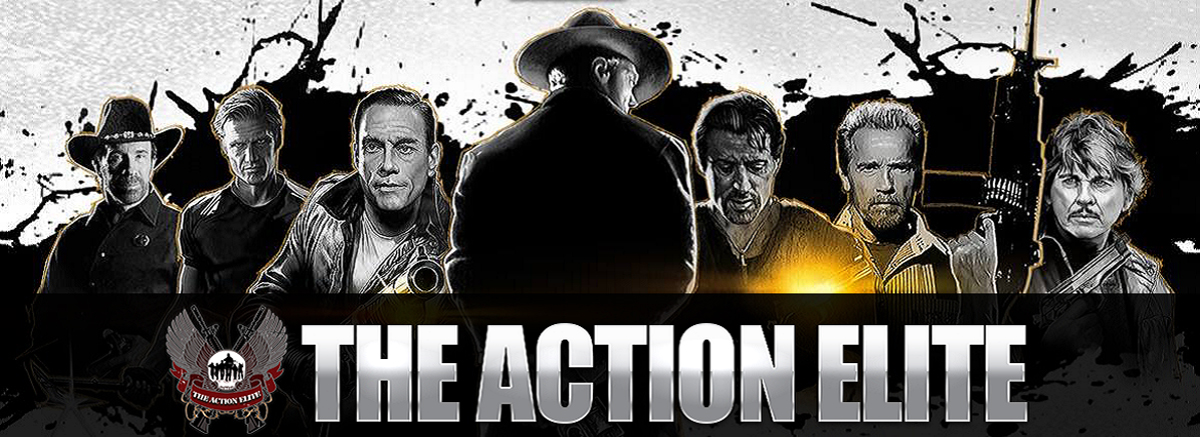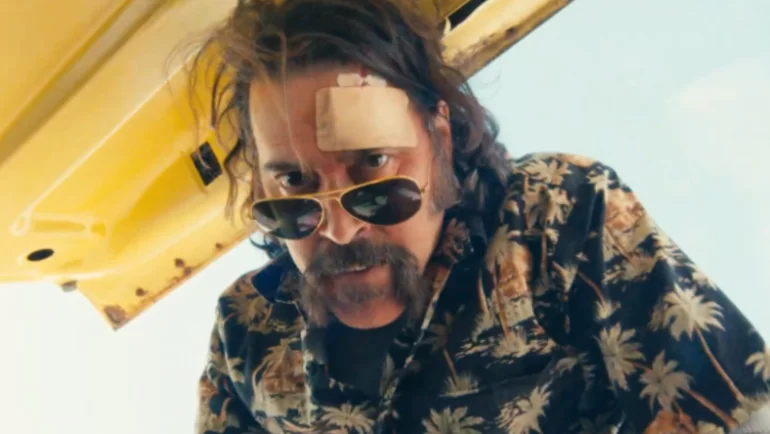Today we’re talking about your new film, Cursed in Baja, which you wrote, directed and star in. Where did you come up with the whole idea for it initially?
Well, what happened is I go to a lot of these horror conventions, and I was speaking to some young filmmakers, and I was slated to talk to them about how to make low budget films. I didn’t know I was going to be doing this. I spoke to them on a Sunday morning and yeah, their enthusiasm was just contagious. We just started talking about how to pull it off, make your list of things, your assets you have, digital technology, all this stuff. And when I got back to Los Angeles, I talked to a friend of mine, and I was explaining how exciting it was. It was very strange. I didn’t expect to be that enthusiastic. I got to Los Angeles and this friend, Kent Isaacs, my producer, I was telling him, he goes, “well, why don’t we just start shooting something?” And one of the main locations we had that we were going to use, one of our assets, was this farm in Mexico, in Baja. And they’re mutual friends of the both of us. And we decided, okay, let’s, let’s start shooting, even though we didn’t have financing in place. Let’s just make a date when we’re going to do it. I have some outlines of what we’re going to do and within a month or so, I put together the script, we had some readings, and then the script evolved as it went. We got that initial footage in Mexico and on the streets of Tijuana and then we were off and running. So, that’s how we started it.
How was Baja to film in?
I mean, Baja is beautiful. It’s like mysterious. It’s got some beautiful coast, but it’s extremely dangerous if you’re in the wrong places. Tijuana is not the place you want to be, especially in certain areas. It’s crazy between the military and you don’t want to be in certain places. So, we were just doing it; there’s just a few of us and we’re kind of holding our cameras low. We’re just stealing shots left and right. We got out of there. I wouldn’t recommend it to people unless they know the area a bit. But then we’re at this farm. And yeah, we just had a great time. Great isn’t the word, but it was challenging; we were just like, on an adrenaline high that we were just capturing so much. We didn’t expect to use as much as we did. We were shooting with drones. We did like everything. We just went nuts. Then we came back and saw what we had. We kind of designed the rest of it around that double location in Los Angeles. So, the way this film came about was it just snowballed and it kept going and going. I was rewriting and luckily, since we had a cinematographer, this friend of mine, he said, “I can help you out as long as you work within my schedule. I’m going to be busy here and there”. And so in wearing this many hats in a film, it’s exhausting if you had to do that for a full shoot for three weeks, four weeks, whatever. But since it was like a couple of days here, a few days here, an afternoon here, you can manage it. You can definitely manage it because there were gaps in between. We are editing in between to see what we are missing and what we needed to add.
How do you find the editing process? How do you decide what to keep and what to get rid of?
Well, I’ve worked with the same editor for a while. We both have a similar sensibility and he’s really talented. And so, yeah, a lot of times I’d have notes, say this is what I want to try to do. I let him go. Then we meet together, and we rework it and adjust it as need be, sometimes not at all. It was great because we had those gaps. One of the things I structured in this script was that there are these mind loops, this imagery that the main character kept seeing, these visions. I already had a lot of that footage from different projects I’ve shot before that this editor had done. He was all familiar with that, too so it just happened to work. This project was just like this weird collage of all these things that came together at the same time. There was a window of availability for a group of us. And then there was a pending strike in the summer. So, I knew I had to get it done. There were a few months I had that we tried to get most of it. Then I had another month and then the strike hit. So, that’s what I was doing during the strike – editing.
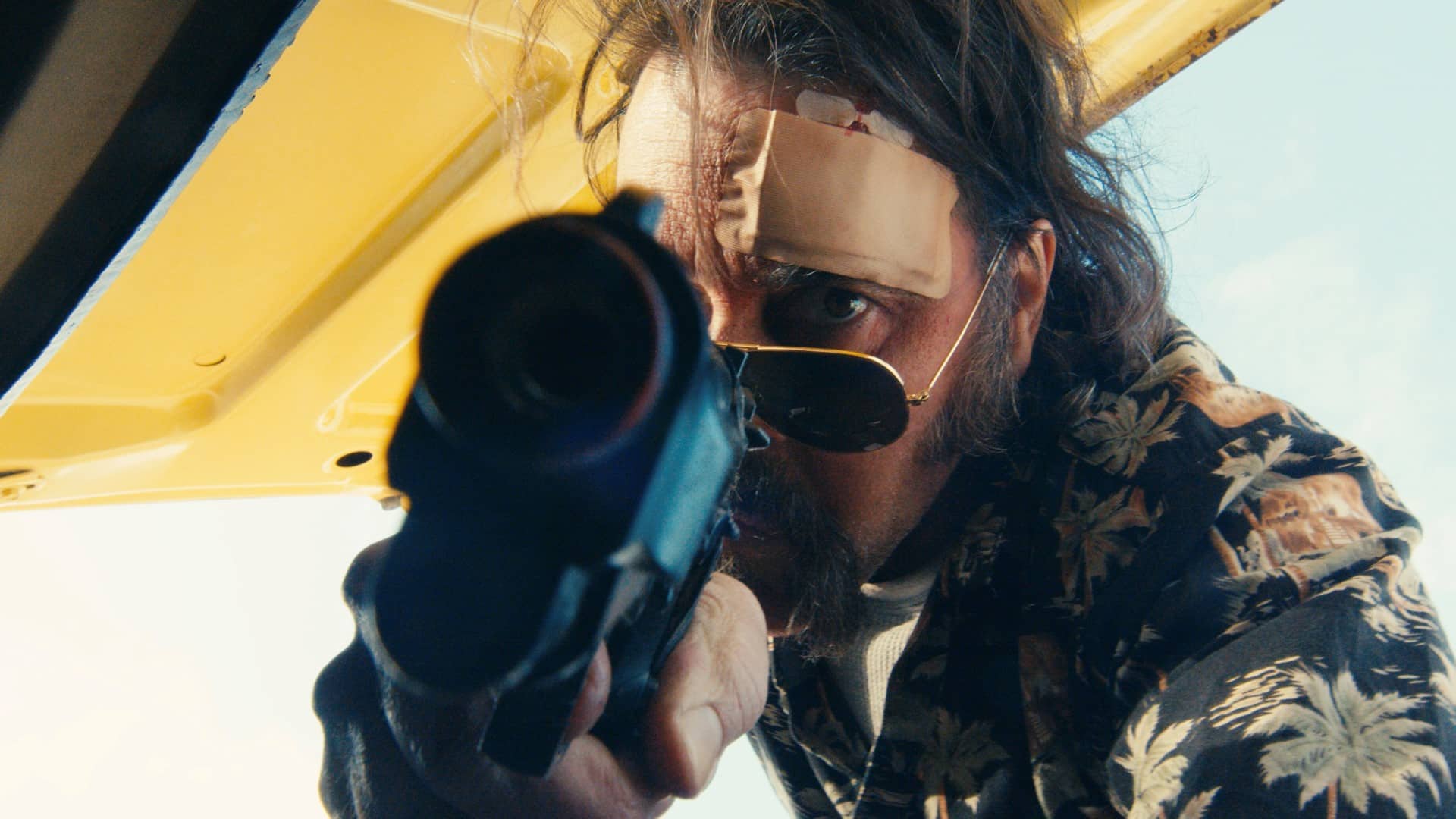
Your character, Pirelli, is a complicated man. Where did the inspiration for him come from?
I always liked the B movies. The whole idea is this is an ode to the B movie, which they never had as much money or budgets or stars. They had to be very efficient and clever with their narrative. I like the detective, the hardened detective character, the trope in noir. And of course, the horror; I knew I was going to blend the two of them together. I knew I would show up every day. I knew my schedule was available. It was cool to have the audience witness things as the main character witnessed it, like you were taking them along on the trip. He was an ex-soldier. He was an ex-con. He was an ex-detective, an ex-junkie. He’s just this rudderless guy that doesn’t necessarily understand the norms of society. So, you’re just watching this guy forging his way through this world that he’s been to; again, he knows he’s not supposed to be there, and the audience just sees this thing spin out and play out as he’s experiencing it through the movie. I don’t know, it seemed to make sense when we were doing it. I hope it did. I mean, did you see the movie?
Yeah, I watched it. I’m not going to interview somebody if I haven’t watched the movie (laughs).
But you’re here and you must like it enough to interview me.
Yeah, exactly. I thought it was awesome.
I’ve had that before where people have asked me, “have you seen the movie?” And I’m like, “no”. And they’re like, “then why are you here?” I’m not going to do that. But I’m just trying to lure people into seeing it because I think, I don’t even like to talk about it too much because I just want you to experience it for the first time and not know much.
I just love that you made a new movie. It’s not a big superhero movie or a remake. It’s a new movie with a new story and new characters.
Oh, well, thanks. Yeah, it’s totally homemade and raw and rough, but that’s what we were trying to do.
Yeah. Generally, for this project and for anything you’re writing, do you have a specific process or do you just write down ideas when you come up with them?
Well, because I had to move fast, I kind of had this character mapped out in a couple of different pieces that I kind of collaged them together. We did a lot of table reads. I bring the actors in at the table reads, and it’s a bit of a casting process, too, just to hear how it sounds. But yeah, the writing and the development of the characters, they kind of see how their pieces of the puzzle fit together. I could see it, too and then I actually try to break away with them separately and have discussions and how it’s going to work, because there’s going to no matter how you think it’s scripted, especially in this kind of thing on the fly; it’s never going to happen just how you wrote it. Hopefully that’s a good thing and usually there’s a lot of happy accidents. We had a lot of them, too. There are some great performances that I did not expect to be as good as they were. So, I was very happy.
Great to see Barbara Crampton in there.
Yeah, Barbara Crampton. Barbara Crampton is one of those people who is a big indie supporter and she’s just a dear friend of mine. I said, “hey, do you have an afternoon? I have this prison set. Do you think you could show up?” She said, “I’ll be there”. So, yeah, thank God for the Barbara Crampton’s in the world.
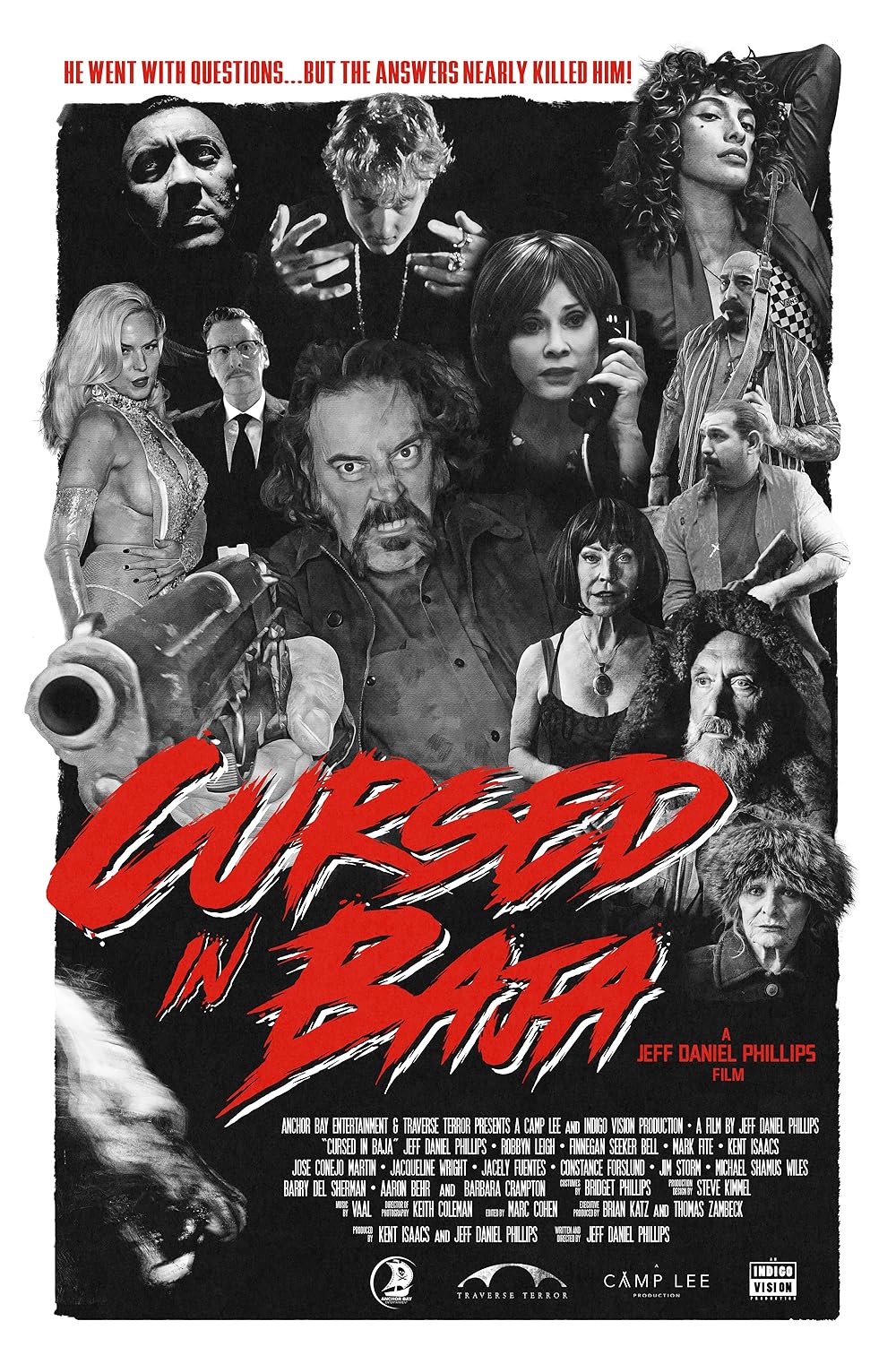
How did you work with the rest of the cast to develop their characters?
Yeah, we did the readings. I would meet with them separately. I’d give them the history. If they wanted to add something to it, that was great. I wrote like the main character, the young rapper, the young man. I’ve known him since he was a baby. The footage you see of him with the Super 8 is stuff that I shot of him when he was a baby.
Oh, really?
I’ve seen this kid grow up and he is a very successful rock star in Mexico right now. He does these concerts. So, I crafted it around everything. I knew it wouldn’t be that far fetched. And then he brought in Keneho, the the other guy, that’s the rapper, that’s the villainous kind of guy. Anyway, I wrote it for the people I knew because I knew it was going to be a friends and family type project.
One thing I particularly loved about this movie, and I will always champion is the use of practical effects, like with The Beast and then all the gore. It all looked great. Was that important to you to do as much in camera as possible?
Yeah, yeah. I think the people like these kinds of movies love this type of practical effects and I’ve had a lot of experience with it. The special effects guy in particular, this guy, Jay Mojala, he had turned me into a Cyclops for a commercial or something, whatever it was. I just went to him, and he has this whole studio of just like shelves and shelves of prosthetics and arms and body parts. I said, “hey, can we use this and that?” And he said, “of course” and he just brought gallons and gallons of big buckets of blood. We just went to town for a few days, and he has an experienced film crew. That was one of the more expensive things that we had to do. But we were able to schedule it for those few days that we needed. Then I did some reshoots on my own by just going to a butcher shop and getting some horrible stuff I saw. Crazy intestine type stuff, because you do what you got to do; if you don’t like just trying to make it work. It was closer inserts, but it looks great. It’s convincing.
You mentioned that your buddy was a cinematographer; how did you decide on visual style and just the whole look of the film?
I mean, much of it was dictated on the budget. We wanted to keep it raw and homemade and immediate. We just wanted the audience to experience different situations as he discovers them, so it was very immediate. Since we didn’t have a big crew anyway, the DP just had all sorts of different devices that he could do mostly himself. And so that’s how we wanted to keep it just rough and ready and a bit of a documentary type style for some of it.
How did you work with Vaaal to create the right musical sound for the film.
He is just like this musical mad scientist of sounds and stuff. If you go to his Instagram, you’ll see he’ll have like a bow playing some jagged metal or whatever. I knew that about him and Kent Isaacs knew him. He’s also Swedish and so he turned me on to him. He got brought in. We were already shooting when he came in. I didn’t necessarily know it was going to be him, but he saw footage along the way. He was able to jump on the train as it was running; like he just ran, jumped on. He just kept sending us stuff while we were editing and yeah, I think he nailed it. He’s just a really talented guy. I’m so lucky when we get him now and not later as we wouldn’t be able to afford him because I think he’s gonna boom. His type of soundscapes were great reflections of what the character’s mind was about between the visuals we had and the sound. I just thought he was great at keeping that tragic demise in the audience’s head just flowing through throughout the movie. I just thought it did a great job.
Absolutely. You mentioned B movies were a big inspiration. Were there any particular filmmakers who you would say are a big influence in this one in particular?
I didn’t realize it until later it was Nicholas Roeg. When editing gets into that realm where you’re just bombarded with imagery, especially if it works for the script. As Donald Sutherland died, I think during the editing, and I was thinking about Don’t Look Now. That was one of my favorite movies I remember seeing in film school. I just think that that and then also some of the B movies. There’s one particular B movie I talk about that influences me was this movie I saw as a kid. When you see something as a kid, it really sticks with you. And my parents took me to this movie, which I was way too young for and it was called Race with the Devil. There’s an RV and they go out camping and there’s satanic cults and just the people are scarier than the creatures, even though we do Chupacabra. But it’s the people you don’t trust and, in this movie, you think one person’s about this and then there’s a twist. So, that stuck with me. I can’t remember the name of the filmmaker, unfortunately, but that movie. That’s the motorcycles I use in it, out in the desert. I think that was another one that definitely influenced me when we started putting it together. Luckily, the DP has all those motorcycles. So, he’s that guy was just the hero of the film. Really handy. He had drones, he had motorcycles, he had off road vehicles and stuff. He’s just great.
That’s awesome. How would you like Cursed in Baha to resonate with audiences?
I mean, after I think there was one audience member that said, “it’s the type of movie that you go to see and you let it happen to you and then the next few days you start to piece it together what actually happened and who knew what when they knew what. That’s the kind of movie that keeps you guessing and interested throughout”. Hopefully the audience just appreciates that this is an ode to a B movie. A bunch of friends made this thing, and they just enjoy this unpredictable, homemade fever dream ride. That’s what I hope that people stumble across it in the middle of the night. They’re watching TV and then they just lock in and go for the ride.
Yeah, exactly what I was thinking when I was watching it. I thought I would love to watch this in a theater at midnight with just a whole bunch of people.
Yeah, so we’ve done that twice. And yeah, that was so rewarding. Maybe we will along the way. We did one in at Fright Fest. That was a lot of fun. Then we did one in Los Angeles. That was cast and crew and nobody had seen anything. I think it’s been almost two years since we shot it. So, everybody was like, “oh, my God,” because people would come in for a few hours, maybe a day. They didn’t know what we were doing, and it looks so sparse what we had. While Jeff’s doing this and he’s putting up a sign and he’s running over here and he’s putting a bandage on his head and he’s jumping in. They were happily surprised, and everybody had a great time, and people were laughing and wincing at the right times. It was so much fun for me.
Well, thank you so much for taking the time to chat and all the best with the movie. You take care and chat to you again soon.
All right. Bye. Take care.


